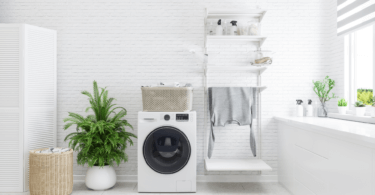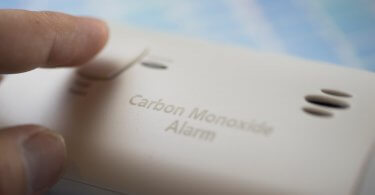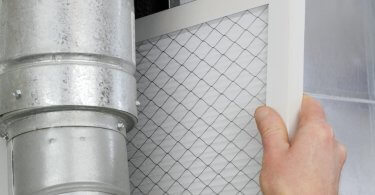Mold is naturally occurring fungi that thrive in practically any type of environment where moisture is present. Mold grows and multiplies through spores, and can fill a whole room in a matter of days, or even hours.

Different types of mold can grow in buildings or nature. When found outdoors, mold performs a vital function as they break down the decaying matter in nature. Once mold enters indoors, the matter takes a serious turn. Mold appears as small black spots on your walls as dust and other particles mix with them.
Let us take a look into some of the most common hazardous molds hiding in your homes.
Types of mold
1. Cladosporium
You could identify this mold as being olive-green or brown-colored and with a texture that’s suede-like. The troubling feature about this mold is its ability to survive no matter what the temperature conditions. Watch out for them in your kitchens, bathrooms, window frames, cabinets, wooden floors, and materials like carpets and fabrics.
2. Chaetomium
This mold feels like cotton, starting out as a white substance but gets darker over time, turning brown, then gray, until it finally becomes black. It likes to live in very moist areas where no light passes through so you have to check the remote corners of your kitchen, basement, bathroom, roof, and pipes. They emit a musty smell in their surrounding area.
3. Alternaria
Considered as the most prevalent form of allergenic mold in the world. It abounds in many areas, especially during spring and summer. It has a smooth, soft surface which may have dark green or brown hairs. One may often see this mold in showers, bathtubs, and sinks. When left alone, it can quickly spread.
4. Aspergillus
Next to alternaria, aspergillus spores also exist in high concentrations in the air we breathe. Its presence can also be found in many American households typically growing on walls. Comprising 185 species, it comes in various colors. An allergenic mold, it can become more toxic as certain species form a cancerous substance called aflatoxins. It usually causes respiratory and allergic reactions when exposed.
5. Stachybotrys
The deadly “black mold”, this is the highest class of toxic mold in the world. Its appearance is like a dark green or black slime that pesters walls. Be careful to check your homes for areas that may have been damp, wet, and humid for long periods of time like wood or cardboard as these are perfect breeding grounds for the deathly fungus. If exposed, one may experience severe symptoms including tightness of breath, sinusitis, physical exhaustion, and depression. There is also a chance of contracting nerve pain and bleeding in the lungs.
6. Penicillium
The popular substance found in penicillin, it can actually cause harm in its natural form. You may recognize it as being bluish or greenish and a silky, smooth surface. Everyday materials like wallpaper, mattresses, and carpets house these organisms. When inhaled, it may make your lungs swollen, trigger asthma, and cause chronic pulmonary illnesses like bronchitis and sinusitis.
7. Fusarium
These molds develop in the colder, damp areas of your home like carpeting and drywall. Having a shade of pink, white, or red, these can become the source of a rare eye infection called fusarium keratitis. Even further contact with the fungus can neurological problems and internal bleeding caused by toxins it creates.
8. Aureobasidium
Often sticks to wooden furniture or painted walls and surfaces, you may notice it being pinkish or black in color, but as it evolves, it takes on a dark brown hue. One of the more common molds, it typically causes dermatitis and other skin infections, as well as eye and nail infections.
9. Trichoderma
With five known subspecies, trichoderma is what we would usually imagine when we think of molds, looking like fluffy clumps of green and white. Look under your carpets, check behind your wallpapers, and don’t forget your wet fabrics, as these love to reside in such damp areas. Some types are non-pathogenic. Others can become toxigenic, producing substances called mycotoxins which have similar traits to stachybotrys.
10. Ulocladium
Another deadly fungus, it is black and may look like greasy stains or insect mounds. If your home has sustained extreme water damage, it may be susceptible to growths of ulocladium. Severe reactions include hay fever, asthma, and shortness of breath. You may notice that it tends to have similar traits with other molds so if you are unsure, it is best to consult a professional.
For a more concise list of areas where these molds can be found, this Mold and Bacteria Consulting Laboratories guide shows you the classifications, their degree of risk, and the common places that the molds hang out.
Health Risks of Mold
It is important to keep your home safe from the health risks when the mold colonies reproduce.
First, they start spreading to the walls. Then they crawl to the living room, the bathroom, and the bedroom until your home has been fully invaded. Small amounts of mold are not a threat. However, its spores can be toxic for people who have an allergy to them. The earlier you identify a mold growth in your home, the quicker it will be to prevent a hostile takeover.
READ ALSO:
The Best Air Purifier for Mold and Mildew
Why Is There Mold On The Styrofoam In The Air Conditioner?
Mold Treatments
To deal with mold, it would be best to let professionals handle it. There are a few steps you could take to remedy the problem on your own. Make sure you identify the type of mold before you deal with it.
You may try to remove the materials that have been infested with molds. If a room has already been covered in molds, you can dry out the room first with air movers, dehumidifiers, and air scrubbers. Isolate it so that the molds would not spread in other parts of the house. Cover your eyes, nose, and mouth with a mask so that you would not inhale the mold. If possible, protect your skin with thick clothing and gloves. You may use a fungicide to kill the remaining molds.
An alternative method if you cannot afford the equipment and materials is for you to use a detergent mixed with warm water to wash the surfaces. Bleach it afterwards. Repeat the cycle three times. After you have done that, make a borate detergent solution. Use that to scrub away the remaining molds.




